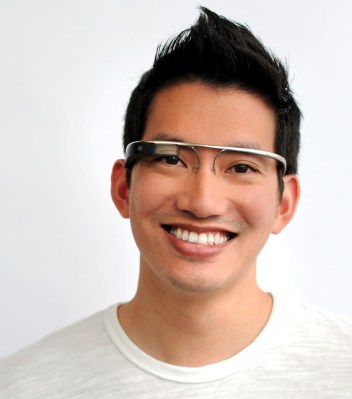Wearable connected devices are having a moment — largely anticipatory — as excitement builds about the potential for sensor-packed mobile kits that you strap to your person and use to augment/record activity from your daily life. Yesterday Google announced the first hackathons for its Project Glass smart specs to get developers thinking about building apps for a new type of mobile device, while a smorgasbord of wearable fitness tracking gizmos such as smart watches and bracelets continue to crop up and attract attention (and sometimes a lot of cash) on crowdfunding sites.
Rumours of big name tech companies getting into wearables also continue to do the rounds, fuelled by patent filings such as this Apple Project Glass-style patent filing. And this from Microsoft. Apple has also been rumoured to be building an iWatch. The market for smart mobile wearables is nascent and therefore unproven (one example: Pebble’s smart watch attracted close to 70,000 backers and more than $10 million in funding on Kickstarter) but there does not look to be a shortage of companies — big and small — willing to test the waters.
Analyst Juniper has taken a look at the mobile wearable devices market — parcelling up different types of devices including smart glasses, health and fitness wearables and enterprise wearables (such as scanners and tracking devices that are used for enterprise logistics and in factories) — to made its best guess as to how the market will ramp up over the next five years. In a new report the analyst predicts the market will grow from 15 million smart wearable device sales in 2013 to almost 70 million in 2017. (For a little perspective, the number of smartphones in use globally exceeded one billion in Q3 alone last year, according to Strategy Analytics). While Juniper reckons the global market for smart wearables will be worth more than $1.5 billion by 2014, up from $800 million this year.
Juniper’s wearables prediction factors in a significant ramping up towards the end of the forecast period, based on “significant adoption… driven by the launch of augmented reality glasses and similar products from Google, Microsoft and Apple”. “Google Glass will be made available to the consumer only by late 2013 and with players like Apple & Microsoft filing wearable device patents, we expect Apple to launch similar products in the medium-longer term,” says Juniper analyst Nitin Bhas.
That’s quite a big assumption at this point so — as with all analyst forecasts — don’t take these figures as gospel. Juniper concedes there’s a fair amount of guesswork going on at this early stage. “There are, of course, inherent challenges in forecasting a market which is early in its life-cycle,” Bhas says. “While Juniper Research has questioned key players on their expectations of the market for both their own projects and the market as a whole, we believe that only when several commercial rollouts are underway can adoption rates be ascertained with a high degree of certainty.”
Caveats aside, the analyst is predicting that fitness and sports wearables will dominate the wearables market, followed by healthcare devices — taking a combined market share of more than 80 per cent in the final forecast year 2017, with the retail value of healthcare devices slightly larger than fitness and sports owing to higher retail price points. Juniper also expects consumer adoption of smart glasses to increase by 2017 as retail price declines.
The development of an app-ecosystem for wearable devices will be vital to drive adoption by building a platform around the technology, it adds. In terms of geographical markets, North America and Western Europe will dominate global wearables — representing more than 60 per cent of device sales, according to Juniper.
Bhas adds: “Juniper Research’s own research, corroborated by discussion with industry players, suggests that adoption will be highest in the U.S., but the anticipation is that usage will spread to selected European and Asian markets during the five years for which roll outs are forecast in the report.”
